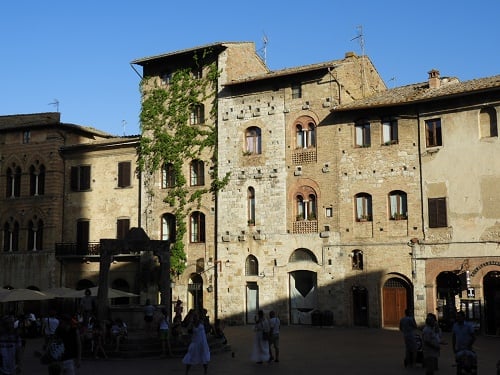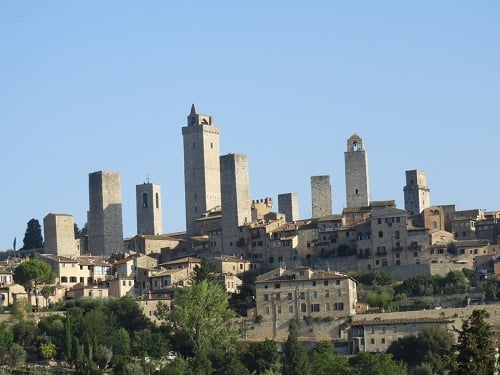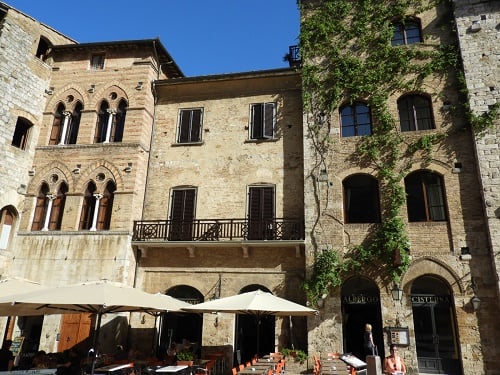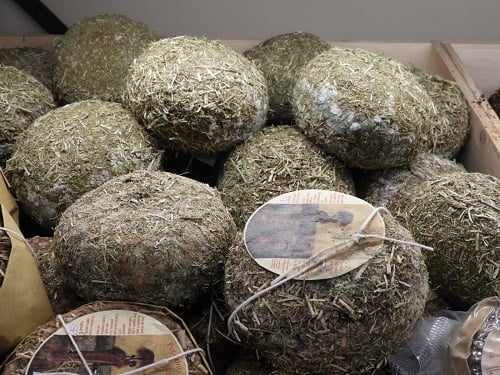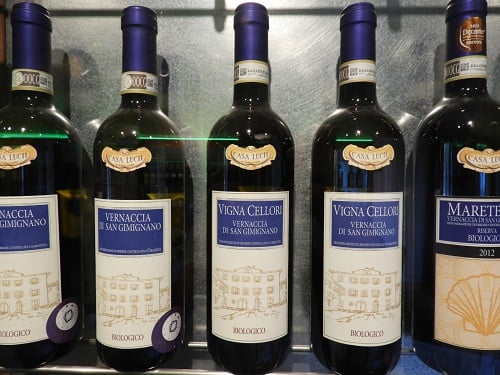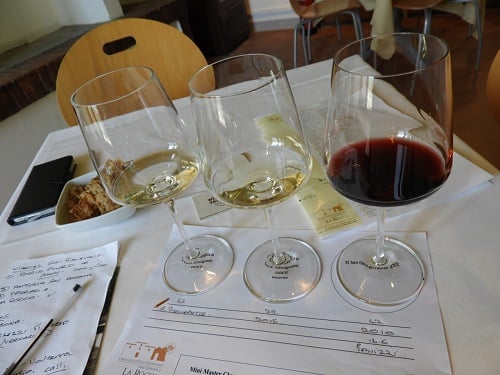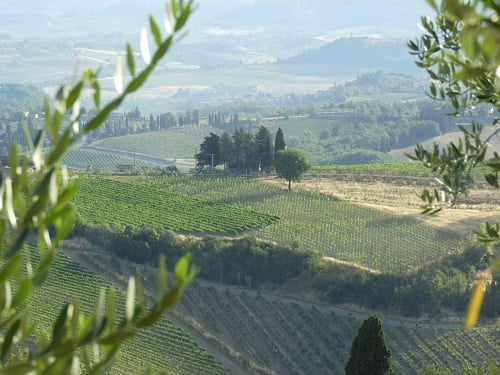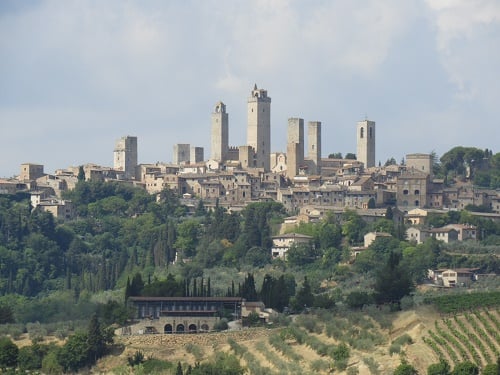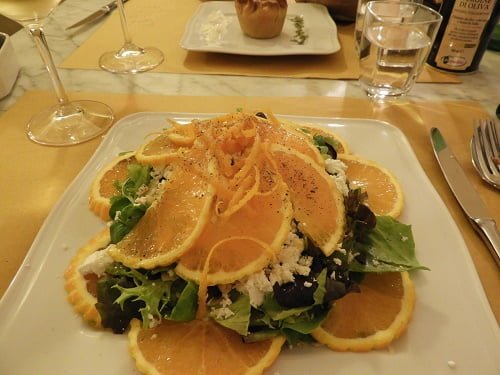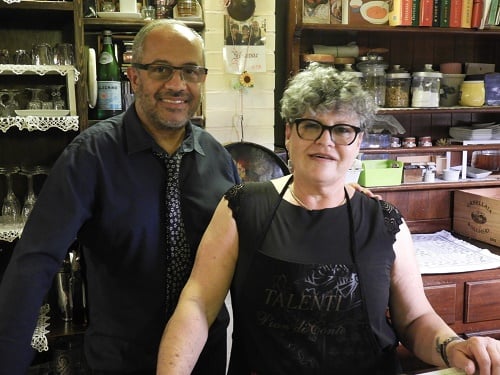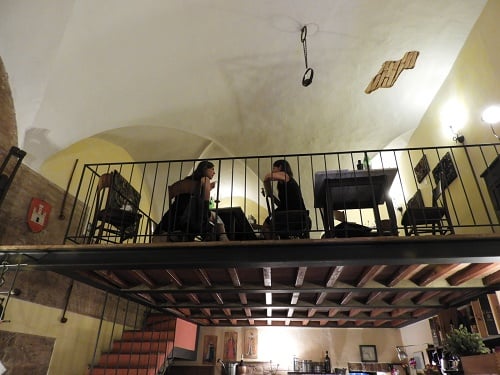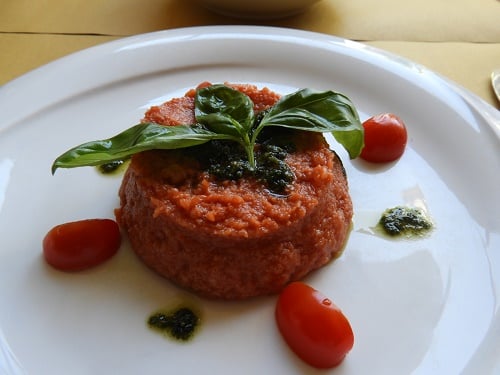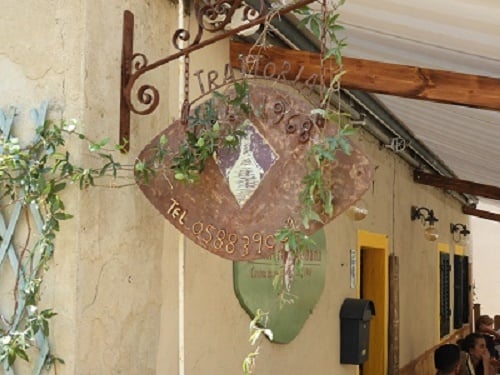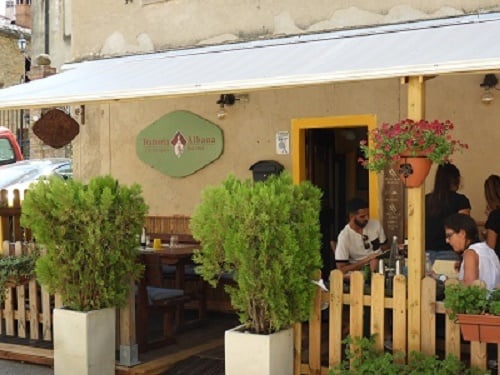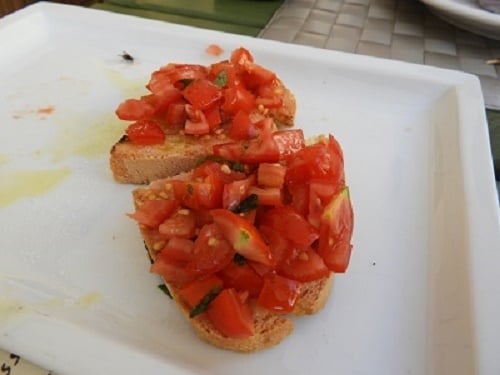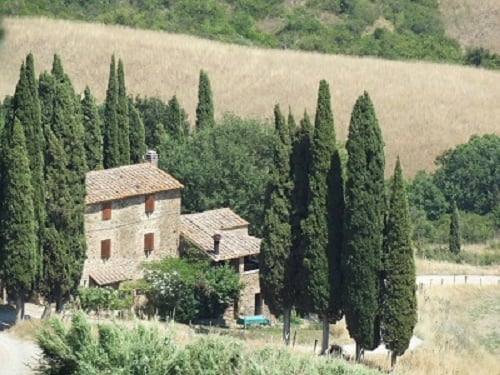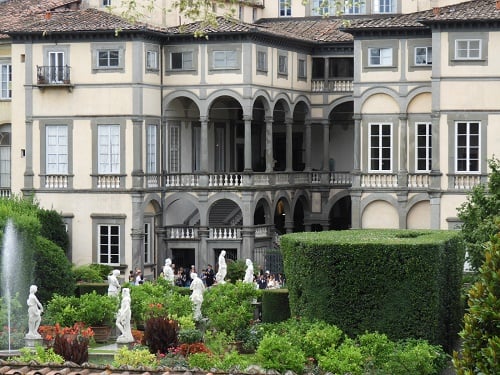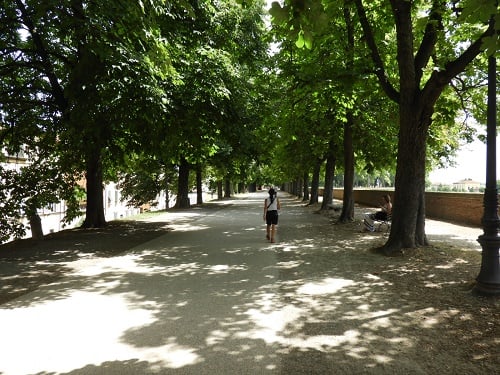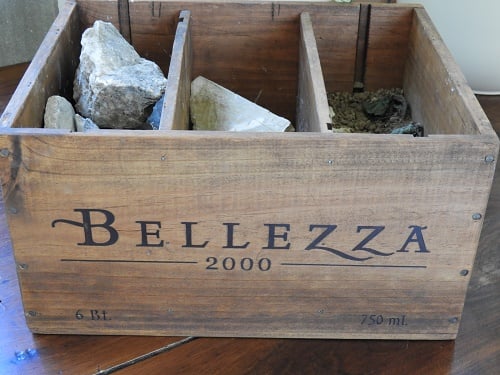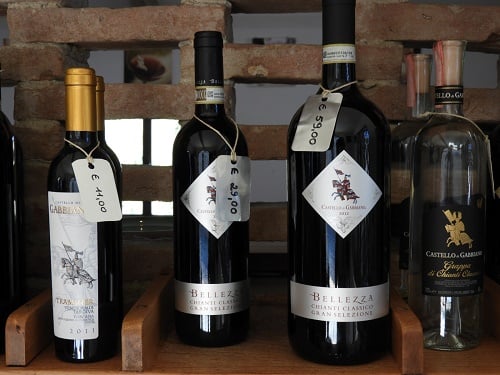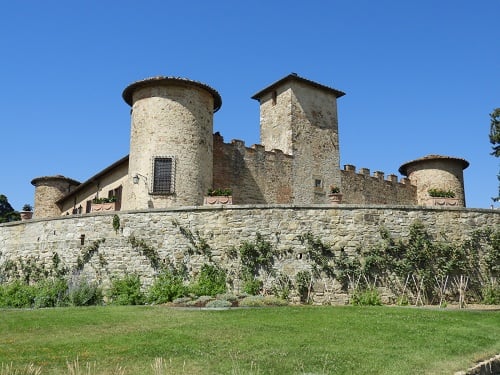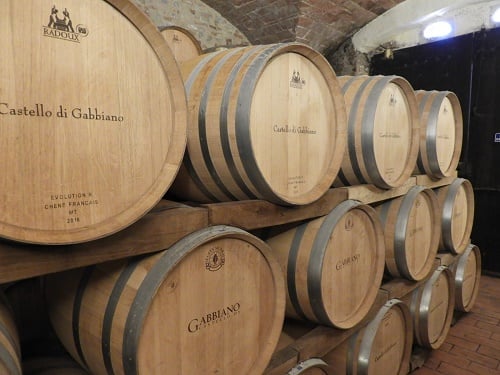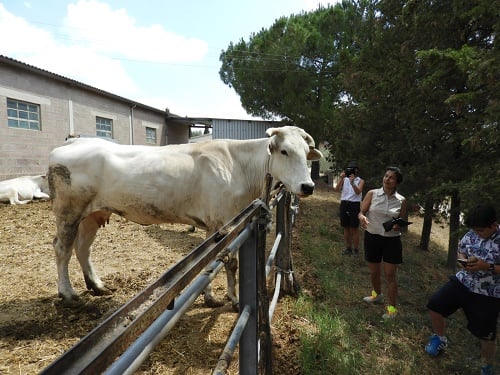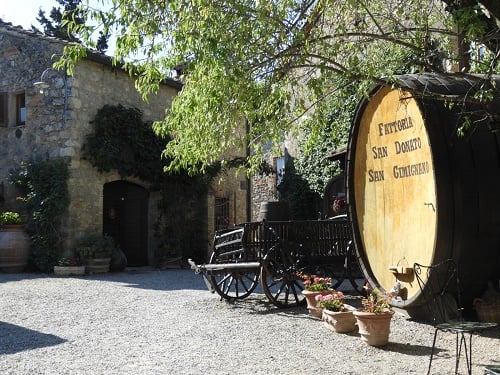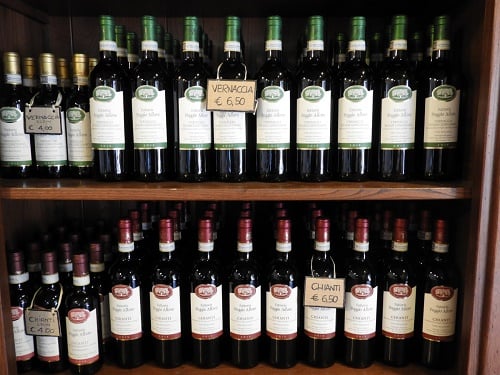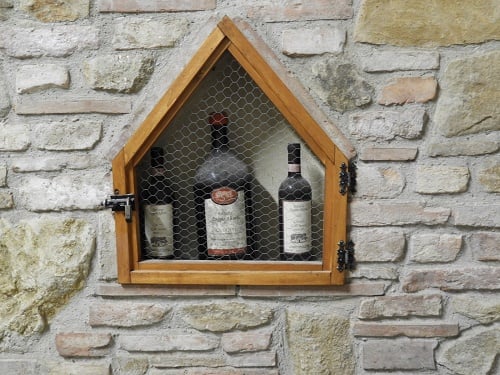A Taste of Tuscany. Slow Food Travelling
We are heading into the final week of 4 weeks and 4 regions across Italy. Exploring the best locavore be it wine, food, dairy products, or Olive oil. So far we have slowly travelled the Veneto, Piedmont, Abruzzo, and now we taste a corner of Tuscany that we haven’t previously visited in 18 years of travel through Italy. Soo looking forward to it.
It’s a short drive (depending on your navigator!) from Florence out to the municipality of San Gimignano and we have opted to stay right on the Piazza della Cisterna in San Gimignano. During the day the town heaves with tourists but the evenings are magical and peaceful.
In the region, there are over 100 Agriturismo but you need to know which ones suit your needs as a majority only have one or two rooms. On this trip we visited about five agriturismo and for our new tour we will actually stay at some of the better ones as it’s a wonderful way to immerse one’s self in the sustainable lifestyle they live. Some have become big tourist operations, and a majority have retained their authenticity.
The surface area of the municipality of San Gimignano is about 12500 hectares, 5600 of which are destined to farm production, vineyards, olive groves, cereal crops & saffron.
Wine production is the main activity at most of the Agriturismo, with vineyards accounting for 1900 hectare, of which 720 are allocated to production of Vernaccia di San Gimignano. This is one of the oldest and most prestigious white wines of Italy, and the first wine to receive the D.O.C. in 1966.
Our guide for dining is the Slow Food “bible” Osterie & Locande D’Italia. There is no shortage of dining options, with 26 Osteria / Ristorante listed inside the historical centre alone.
On our first night, we only had to walk 20 meters from the hotel La Cisterna to Osteria del Carcere, a tiny restaurant run by a delightful couple Elena & Ribomar who offer their guests cured meats, cheeses and other local specialties. The antipasti is outstanding. There are no pasta dishes on the menu, only soups, (due I think to the size of the prep area- its tiny) The Papa al Pomodoro was truly amazing. Great selection of Tuscan wines by the glass. We were tempted to go back but were spoilt for choice with so many dining options to try.
In the hills of Volterra we find a village hidden at the end of a winding road, and it’s there that this superb little Trattoria greets us. The village is hard to find but the journey is worth it. Time appears to have stood still in the Medieval village yet the car park at the end of the road shows a handful of cars, and as the Trattoria is the only place open we know it’s going to be good. It’s easy to find, once you arrive, on the little Piazza, seating 20 outdoors on a cute little shaded terrace, and probably no more than 26 inside.
The cuisine is true to the philosophy of Slow Food with all produce sourced and prepared locally, following the seasons and presented with passion. Begin with home cured meats, crostini, both meat and vegetarian, marinated herring and raw milk cheeses from the hills of Volterra. The prima plates include ravioli made with chestnut flour & spelt flour straccetti made with meat or rabbit sauce. The pappardelle with wild boar was stunning, and they also use rabbit, and venison. We had seen wild boar on our way in and with the hills a maze of impenetrable forests and caves it’s a perfect area to source their game, including red deer, rabbit, boar and wood pigeon.
The wine list is very local, very good, and well priced, but be mindful of your drive home, it’s a very windy road.
We did a day trip across to Lucca, and it really warrants a longer time there, but well worth an early arrival to walk the walls of the city, before exploring the streets within. To see more definitely worthwhile hiring a bike, and there are a few very good Bike hire & tour specialists inside the walls.
We are searching for Il Mecenate, in the wrong part of town as it turns out, but with persistence, plenty of walking and local instructions we find it back in the old town. Its buzzing with locals, always a good sign, Friendly welcome, great service, traditional menu, the classic Lucca tordelli with meat.A good wine list with wines from all over Italy, with special mention to Monte Carlo and the Lucca hills. All very affordable and well worth the effort to find it.
Another day trip takes us into Chianti, and for background its best described by Chianti.com here;
The expression Chianti Classico suggests the oldest and most genuine area in the Chianti region. As a matter of fact Chianti is a vast area in Tuscany and is divided into 7 sub-zones, each one producing its Chianti wine with a specific name and label. Chianti Classico stretches between Florence and Siena and includes only 14 municipalities: the whole territory of Greve in Chianti, Castellina in Chianti, Gaiole in Chianti and Radda in Chianti, and part of the territory of Barberino Val d’Elsa San Casciano in Val di Pesa and Tavarnelle Val di Pesa within the Province of Florence, and part of the territory of Castelnuovo Berardenga and Poggibonsi in the province of Siena.
We have been invited to visit Castello di Gabbiano now owned by Treasury Wines here in Australia. Aside from the wines, which are amazing, this place would be a great base from which to tour the region. Set in the Chianti Classico wine region, this B&B occupies a quaint castle and a 16th-century farmhouse. It’s 10 km from the Museo del Vino (wine museum) and 9 km from the historic abbey Badia di Passignano.
Encompassing 139 hectares (343 acres), Castello di Gabbiano is split between two hills allowing for a wide variety of grape characteristics and wine styles. In terms of what’s planted, you’ll find 80% Sangiovese, 14% Merlot, 5% experimental vines, and 1% San Colombano and Malvasia.
Back in the territory of San Gimignano we visit some of the local wineries including Fattoria Donato (highly commended in the Slow Food bible), and Fattoria Poggio Alloro which is geared for coach groups however if you avoid those times, they do very good tours of the agriturismo. They also raise Chianina cattle, Tuscan and Cinta Senese pigs, guinea fowl, rabbit & chickens.
The first of our wine and food tours through this region was launched in March 2018, after sourcing products we thought were special and a little different. These tours include exclusive visits to private fattoria (wineries) and other artisan producers in the region. See this tour
I’ve also teamed up with the best local operator of wine and food tours for those who only have time for a half day tour , especially for those who dont have 7 days to spare on one of our tours. day tours of Tuscany

